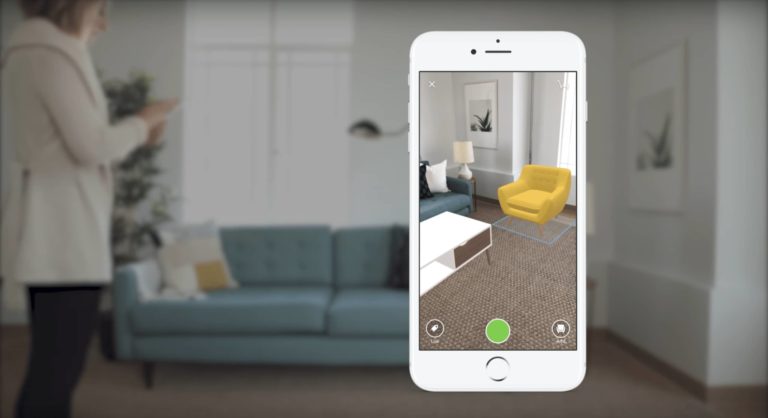
Shoppability is the new black. There’s a trend towards all things being shoppable. We’re talking buy buttons on everything from YouTube videos to Instagram Stories. This isn’t new but is one of many trends that’s been Covid-accelerated as it piggybacks on eCommerce inflections.
Elsewhere – and for similar reasons – we see a separate trend: AR shopping, also known as “camera commerce.” This involves 3D product visualization to virtually try on everything from cosmetics to couches. It also includes visual search to identify and buy physical objects.
Panning back, these two trends – shoppability and camera commerce – are on a collision course. Point your phone at a jacket a friend is wearing using Snap Scan, then buy it right on the spot. This process compresses the purchase funnel through a visually-informed shopping flow.
This is the topic of a recent report from our research arm, ARtillery Intelligence. Entitled The Immersive Commerce Era: AR & Shopping Collide, it breaks down opportunities and happenings at the intersection of social commerce and AR. We’ve excerpted it below.
Informed Purchase
After covering AR’s ability to boost eCommerce conversion rates last week, we switch gears to examine another benefit: reducing returns. Indeed, this is often paraded as one of AR’s advantages when applied to brand marketing and eCommerce. But where’s the proof?
Before getting into all the evidence, the concept here is that the same “informed purchase” that drives eCommerce conversions can lessen return rates. Because AR gives consumers a better sense of style, fit, dimension, and texture, they’re less likely to return ill-fitting products.
Why is this important? Returns are a $550 billion problem in the aggregate. And for e-tailers that operate on extremely thin margins, returns can cause quite a bottom-line blow. This pain point is amplified in an environment where Amazon has set the market standard for free returns.
For all these reasons, AR’s ability to lessen return rates has resonated especially well among retailers and eTailers that sell bulky items. Not only does AR help consumers determine with confidence if these big items fit, but it can help retailers sidestep costly free-return shipping.
Proof Points.
With that backdrop, as promised, here are a few proof points for AR’s ability to lessen product returns.
— Shopify reports a 40 percent decrease in returns from 3D visualization.
— SeekXR, reports a 25 percent decrease in returns from AR-guided purchases. This comes directly from its work with large-scale e-tailers like Overstock.
— Build.com reports that the return rate for shoppers that use its AR product visualization features is 22 percent lower than non-AR benchmarks.
— Gunner Kennels has achieved a 5 percent decrease in returns and a 3 percent boost in cart conversion rates.
— Macy’s used in-store VR (similar concept) to reduce returns to less than 2 percent, versus industry-standard retail return rates of 5-7 percent.
Beyond robust sample sizes, these data points are validated by their consistency. Many return-rate deltas in the examples above are in the same 20-40 percent range. In all cases, AR is proving its ability to improve margins and thus demonstrate a tangible business case.
We’ll pause there and circle back in the next report excerpt with more analysis of AR’s role in consumer shopping. Meanwhile, read the full report here.






